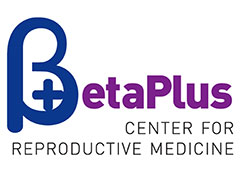
Infertility – where to begin?
Around 15% of the world population has infertility problems regardless of a country’s development. This makes it an important problem of public health. 85% of couples practicing unprotected sex are considered to conceive during the first year of trying. The rest will seek medical assistance or will manage to get pregnant during the second or the third year of trying. A very small number of couples will never be able to get pregnant.

News
European Bank for Reconstruction and Development awarded BetaPlus Center for Reproductive Medicine a grant within the "Women in Business Programme Croatia" program, for financing advisory marketing services. We used this grant to finance consult...
+ MoreDue to the holidays in December, our Laboratory for Human Reproduction will be closed from the Christmas Eve on December 24, 2017, until January 2, 2018. Patients who start their period between December 10, and after December 22, 2017, are free t...
+ MoreWhy choose us?
In a short period of our work, since 2012, we have been recognized by our patients as a center of excellence in infertility diagnosis and treatment in Croatia and beyond. We provide individual approach to each couple and are dedicated to achieving success even in the most difficult cases. In our opinion, the reasons of our success lye in the following:
Reasons for our success are:
EXPERTISE OF THE EMPLOYEES
- Primarius, doctors of sciences, professors, human reproduction specialists, fetal medicine specialist, ESHRE-certified biologist – embryologist.
CENTER ORGANIZATION
- A reproduction gynecologist at the center from 8 AM until 8 PM;
- Nurses are well educated for MAR, taking care of scheduling and informing the patients of the procedure;
- Procedures are done during weekends and holidays.
SUCCESS RATES
- 46% of pregnancies achieved in fresh stimulation cycle and an average of 57% in cryoprocedures (2016 results for women under the age of 37);
- Birthrate for women under the age of 37 is over 30% per cycle which is at the level of rates in Great Britain.
TRANSPARENCY
- Regularly published data on previous year procedure numbers including success rates and birthrates using data obligatory sent to the Ministry of Health;
- Procedure pricelist is made public.
MONITORING AND APPLYING GLOBAL GUIDELINES IN INFERTILITY TREATMENT
- Single embryo transfer recommendation;
- Avoiding ovarian hyper stimulation syndrome;
- Reduced time of rest following embryotransfer;
- Analgesia and anesthesia.






